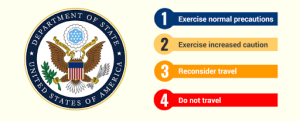Ken Alltucker | Arizona Central
Blue Cross Blue Shield of Arizona will sell marketplace plans in all counties but Maricopa, hiking rates 51 percent. Centene Corp. will sell “Ambetter” plans in Maricopa, with 74.5 percent rate hike.After months of health insurer exits from the Affordable Care Act marketplace in Arizona, state regulators have approved plans from two companies that will be the only marketplace insurance providers next year.
Blue Cross Blue Shield of Arizona will sell marketplace plans in every county except Maricopa County in 2017. The Phoenix-based insurer’s average rates will increase 51 percent, Arizona Department of Insurance filings show.
Maricopa County residents only option will be Centene Corp., which said it will sell its “Ambetter” plans. State regulators approved a 74.5 percent increase for Centene/Ambetter plans.
The amount people pay will vary depending on factors such as age, coverage levels and income that determine whether an individual qualifies for subsidies that help offset the cost of monthly premiums. Nearly 7 in 10 Arizonans with a marketplace plan get subsidized coverage.
The state Department of Insurance said a 40-year-old single Maricopa County resident who does not use tobacco would be charged an average rate of $475 per month for a mid-tier “silver” plan before subsidies. A 40-year-old couple with two children would pay $1,422 per month for a family plan before subsidies.
Although the marketplace was designed to attract multiple insurance companies that would theoretically compete to sign up consumers, that won’t be the case for most Arizona residents next year.
Only Pima County residents will have a choice of marketplace insurers, either Centene/Ambetter or Blue Cross Blue Shield, which will only sell a bare-bones “catastrophic” plan.
Six health insurance companies will exit Arizona’s marketplace in 2017, with some companies citing financial losses during the first three years of the marketplace.
Still, Affordable Care Act advocates said despite the disruption caused by discontinued plans, it’s important to remember that consumers still will have access to coverage. Before the federal marketplace and state insurance exchanges launched in 2014, insurers routinely denied or limited coverage for individuals with chronic diseases or other medical conditions.
“It’s important for Arizonans to know that headline marketplace rate changes do not reflect what most consumers actually pay, because the majority of those who might buy 2017 coverage are eligible for tax credits to keep plans affordable,” said Jonathan Gold, U.S. Department of Health and Human Services press secretary.
Gold added that Arizona consumers benefit from other ACA provisions such as “no annual limits on coverage and no cost sharing for preventive services.”
In addition to marketplace coverage, more than 330,000 Arizonans have gained Medicaid when the state restored and expanded Arizona Health Care Cost Containment System coverage, largely with funds provided by the federal health law.
“Arizonans do have the ability to get covered with health insurance at affordable rates for the upcoming year,” said Diane Brown, executive director of the Arizona Public Interest Research Group Education Fund.
Health insurers that are discontinuing plans in 2017 have already began mailing notices to consumers who will need to switch providers when the three-month enrollment begins Nov. 1. Nearly 180,000 Arizona residents enrolled in and paid for health insurance on the marketplace as of March 31.
The Centers for Medicare and Medicaid Service, the federal agency that oversees the marketplace, will have the authority to automatically switch consumers from discontinued plans to new plans that offer comparable coverage, according to the agency’s website.
On Nov. 1, marketplace officials will begin to email, call or text consumers enrolled in a plan that will be discontinued. The idea is to mach consumers with a comparable plan to avoid a gap in coverage if they don’t select a plan by Dec. 15, a U.S. Department of Health and Human Service official said.
Blue Cross Blue Shield officials said they will seek to make the transition smooth for consumers — both those who are leaving or joining Blue Cross plans — to ensure there’s no gap in coverage.
“With a member’s permission we will share information with their new carrier or doctor to help ensure a smooth transition,” Blue Cross Blue Shield said in a statement.
Although six health insurers are exiting the federal marketplace, at least three will continue to sell non-marketplace plans directly to consumers or through private insurance brokers. Aetna, Cigna and Phoenix Health Plans all filed paperwork to sell such “off-marketplace” plans to consumers. Consumer who buy off-marketplace plans won’t be eligible to collect the federal subsidies that the marketplace offers.
However, the off-marketplace plans are seeking significant rate increases, too, ranging from Cigna’s 33 percent increase to Phoenix Health Plans’ 160 percent hike, Department of Insurance records show.
Brokers say the availability of such off-exchange plans will at minimum give some middle- and upper-income consumers an option to buy coverage directly from an insurance company.
“At least people who don’t qualify for subsidies can go direct,” said Michael Malasnik, a Phoenix health insurance broker.
‘Obamacare’ in Arizona: 2 remaining insurers hike rates by 50-75 percent
Back to News
